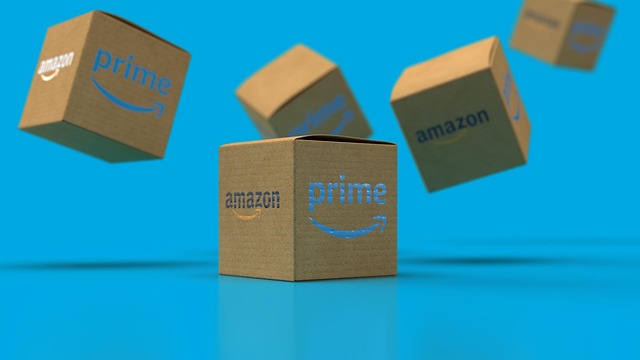Memberships Worth Keeping in 2025: When Paid Programs Actually Pay Off

When Paying a Fee Can Actually Save You Money
“Why would I pay to save money?”
It’s a fair question — and one I used to hear constantly during my years managing retail partnerships. The truth is, paid memberships can be powerful tools for smart shoppers if the value outweighs the cost. But some programs are worth every penny, while others are just shiny marketing.
In 2025, with inflation still squeezing budgets, knowing which memberships truly deliver matters more than ever. Below, I’ll break down the data, benefits, and personal insights on which paid programs actually pay for themselves.
1. What Makes a Paid Membership Worth It
A worthwhile membership gives you at least 3–5x its annual fee in measurable value — either through discounts, cashback, or exclusive perks.
From my experience working with loyalty and subscription models, I look for programs that offer:
- Everyday utility (e.g., groceries, shipping, gas)
- Exclusive discounts or higher cashback rates
- Strong partner networks
- Consistent redemption opportunities
📊 According to a 2024 Deloitte consumer study, the average American household belongs to four paid membership programs — but only uses two regularly. That means most people waste at least $150–$250 per year on unused benefits.
👉 Deloitte: Consumer Membership Trends 2024
2. The Paid Memberships That Actually Deliver Value
Amazon Prime
- Cost: $139/year
- Major Benefits: Free two-day shipping, Prime Video, music, Whole Foods discounts.
- Average Savings: Up to $850 per year in shipping and entertainment, according to Statista’s 2024 Prime Member Report. 👉 Statista: Amazon Prime Member Savings
- Expert Insight: When I worked with consumer goods brands, we used Prime placements because members spent 2.2x more annually than non-members — proof that they engage consistently.
Walmart+
- Cost: $98/year
- Major Benefits: Free delivery, fuel discounts, Paramount+ streaming, mobile scan & go.
- Average Savings: Roughly $500–$700 annually for frequent grocery shoppers. 👉 Walmart+ Membership Details
- Why It Works: Walmart leverages logistics scale — so you’re essentially paying for convenience and cashback in time saved.
Costco Executive Membership
- Cost: $120/year
- Major Benefits: 2% cashback on all purchases (up to $1,000 per year).
- Average Savings: $150–$300 per household depending on annual spend. 👉 Costco Executive Membership
- Insider Note: I’ve negotiated vendor promotions at Costco — the Executive tier often gets early access to seasonal inventory, which can mean bigger discounts beyond the cashback.
Sam’s Club Plus
- Cost: $110/year
- Major Benefits: 2% cashback on purchases, free shipping, early shopping hours.
- Average Savings: $200–$400 annually, depending on usage. 👉 Sam’s Club Plus Benefits
- Industry Tip: Like Costco, Sam’s Club targets high-frequency spenders — if you’re shopping there monthly, it’s an easy ROI.
AAA Membership
- Cost: $64–$124/year
- Major Benefits: Roadside assistance, travel discounts, insurance savings.
- Average Savings: $150–$300/year in combined benefits, per AAA’s own member value analysis. 👉 AAA Membership Levels
- Personal Take: Even beyond travel, AAA’s everyday partner discounts (on hotels, movies, and rentals) make it one of the most versatile paid programs.
3. Memberships That Might Not Be Worth It
Not all paid programs hold their value. Watch out for:
- Retail memberships tied to limited stores. Example: Specialty clothing clubs that rely on constant purchases.
- Programs that require high spend to break even. If you must spend $3,000 to save $100, it’s likely not worth it.
- Duplicate perks. If you already have Prime, you may not need Walmart+ for streaming or shipping overlap.
A Bankrate 2023 survey found that 42% of U.S. consumers pay for at least one overlapping membership they barely use — effectively wasting $300+ per year.
👉 Bankrate: Subscription Spending Survey
4. How to Maximize Your Membership ROI
Here’s how to squeeze every cent of value:
- Calculate your breakeven point. Divide the membership cost by its average savings percentage.
- Use partner offers. Many memberships include third-party benefits (e.g., Prime’s Grubhub+ partnership).
- Stack cashback and loyalty points. Pay for memberships with cashback cards for added returns.
- Set renewal reminders. Cancel if benefits don’t justify the cost after six months.
- Track actual usage. Log how often you redeem perks — it’s easy to overestimate.
From my time running co-branded campaigns, the most profitable users weren’t the highest spenders — they were the most consistent redeemers.
Conclusion: Pay for the Value, Not the Hype
Paid memberships aren’t inherently wasteful — they’re strategic tools when matched to your lifestyle.
If you grocery shop weekly, travel occasionally, or shop online often, programs like Amazon Prime, Walmart+, and Costco Executive Membership can save you hundreds.
But the key is awareness: know what you’re paying for, and make sure it earns its keep.